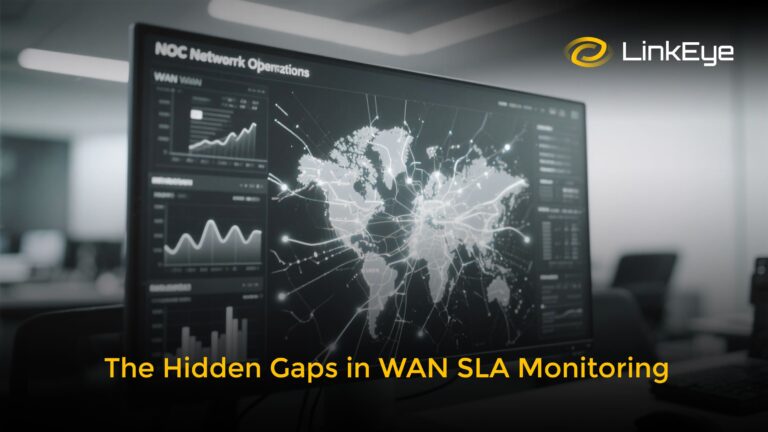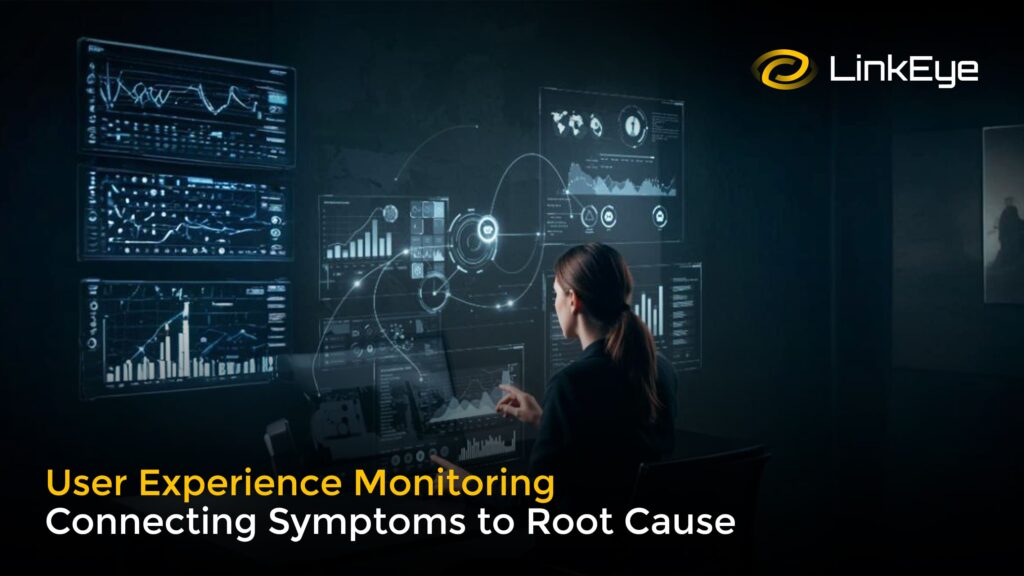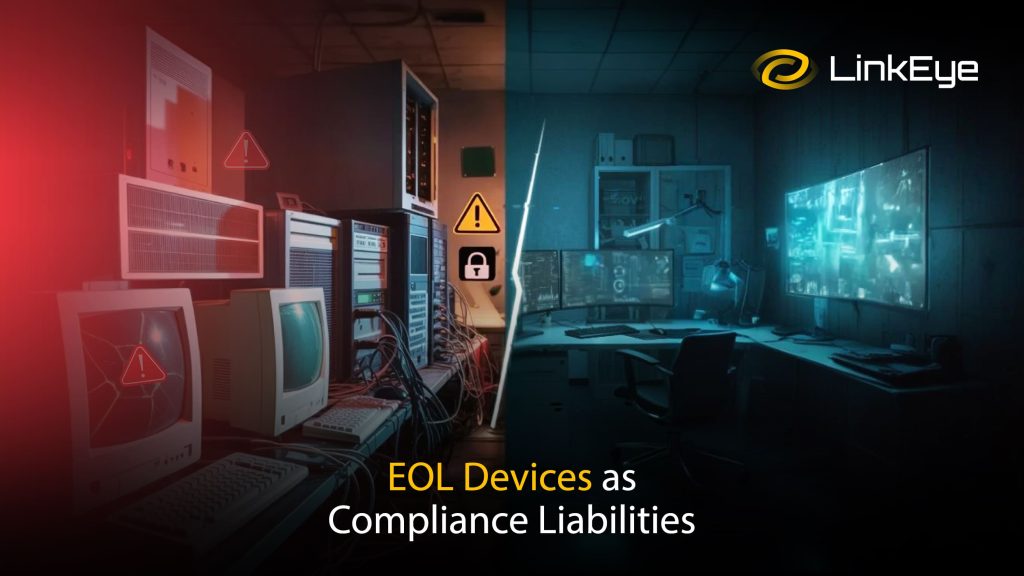A global enterprise recently reviewed its carrier’s monthly SLA report. The verdict: 100% compliance. Yet the story on the ground looked very different. Voice calls were unstable, video conferences routinely stuttered, and application response times lagged.
The cause was a pattern of jitter spikes, each only 40 milliseconds, but recurring every 12 minutes across the WAN. Individually, those spikes fell just below the carrier’s reporting threshold. Collectively, they undermined critical business services. Because the SLA language defined latency in five-minute averages, the provider claimed there was no breach. No breach meant no penalties, despite measurable disruption.
Gartner estimates the average cost of IT downtime at $5,600 per minute. Even a handful of undetected micro-outages per month can quietly drain millions from an enterprise’s bottom line. And according to Enterprise Management Associates (EMA), over 70% of IT leaders admit SLA breaches often go uncredited because provider monitoring data doesn’t match what enterprises experience in reality.
For today’s digital enterprises, the question isn’t whether SLAs are being breached, it is whether you have the independent visibility and intelligence to prove it. This is where a new approach to WAN observability, powered by AI-driven SLA parsing and penalty intelligence is beginning to change the conversation.
Technical Gaps in Network Infrastructure
On paper, enterprise WANs are full of instrumentation: firewalls forwarding syslogs, switches exposing SNMP counters, routers running active probes. But seasoned infrastructure leaders know these tools leave hidden cracks.
Firmware quirks: Firewall versions often drop or misreport probes during upgrades, leaving dashboards green while users experience brownouts.
Switch OID drift: Vendor firmware updates can silently break SNMP object identifiers, creating blind spots in utilization and error tracking.
Router path asymmetry: Provider dashboards may measure latency on a clean forward path, ignoring congestion and jitter on the return.
Aggregation masking: Five-minute averages and monthly uptime stats wash out the jitter bursts and micro-outages that break real-time apps.
These aren’t rare corner cases. They are everyday realities in modern networks and they consistently slip past provider SLA monitoring.
Why Provider SLA Monitoring Misses the Mark
Carrier dashboards are designed with one priority which is to validate compliance against contract terms, but that’s not the same as validating what your users experience in real-time.
Here’s where the gaps emerge:
Selective visibility: Providers measure only what they’re contractually obligated to i.e. packet loss, latency, uptime. Metrics like jitter or app-layer responsiveness are often excluded.
Reporting bias: SLAs rely on smoothing mechanisms like averages and percentiles. A two-second outage every hour still results in “five nines” availability on paper, even if it breaks a trading platform.
Data ownership: Enterprises rarely get raw data. Instead, they receive sanitized monthly reports with limited granularity, making disputes nearly impossible to win.
The outcome: IT leaders know the network isn’t performing as promised but lack the evidence to enforce penalties. This is why EMA reports that 7 in 10 enterprises leave SLA credits on the table every year.
AI-Powered SLA Monitoring
Closing performance and reliability gaps takes more than better dashboards. What enterprises need is a way to connect the dots between infrastructure telemetry and the fine print of their SLAs. This is where AI is fundamentally reshaping the landscape. Instead of relying on manual reviews of after-the-fact audits, AI can parse the dense and often ambiguous language of SLAs and bring it into alignment with real-time operational data.
Every SLA is written differently. Different thresholds, maintenance windows, and penalty formulas. Traditionally, that variability made it difficult to track compliance at scale. AI-powered parsers change this by translating SLA documents into machine-readable policies. From there, the system can automatically cross-check independent telemetry sources such as logs, SNMP counters, synthetic probes against those policies. If latency rises above 25ms for more than 300 seconds in a measurement window, the breach is flagged instantly, with no room for interpretation.
What makes this transformative is that the penalties themselves can now be calculated in real time. The AI engine applies each provider’s formulas directly to determine credits owed. Instead of waiting for quarter-end disputes or lengthy negotiations, enterprises know immediately what’s at stake. Research from IDC shows that organizations adopting AI-driven SLA monitoring cut outages by 25% and improve mean time to repair (MTTR) by 30%, and that’s a measurable financial impact.
The Enterprise-Level Payoff
For CIOs, CTOs, and product leaders, independent SLA monitoring is a technical safeguard and a business strategy.
- Audit-ready accountability: SLA disputes shift from negotiation to data-backed proof.
- Financial protection: At $5,600 per minute of downtime, even modest breaches carry six-figure costs, recoverable with accurate penalty claims.
- Operational agility: Detecting micro-outages early enables proactive rerouting, policy adjustments, or provider changes.
- Negotiation leverage: Clear compliance evidence gives enterprises stronger positions in contract renewals.
Conclusion
The future of WAN observability is reliant on tying those metrics to the contractual promises your providers make and surfacing every hidden breach automatically, in real time. Firmware quirks, OID drift, and path asymmetry are the everyday reasons users feel pain while dashboards look green, and providers won’t always surface these gaps, because their reports are designed to confirm compliance.
That’s why enterprises are now embracing AI-powered SLA monitoring and penalty intelligence. Unlike traditional dashboards, AI parses the fine print of contracts, correlates it with infrastructure telemetry, and produces audit-ready evidence of every breach, no matter how small.
For digital businesses where every second matters, the difference between “reported green” and “real performance” is huge. Enterprises that rely solely on provider data will keep missing breaches and keep forfeiting the credits they’re owed. Enterprises that adopt AI-native observability will flip the script: turning SLA monitoring from a compliance exercise into a financial and strategic advantage.
















